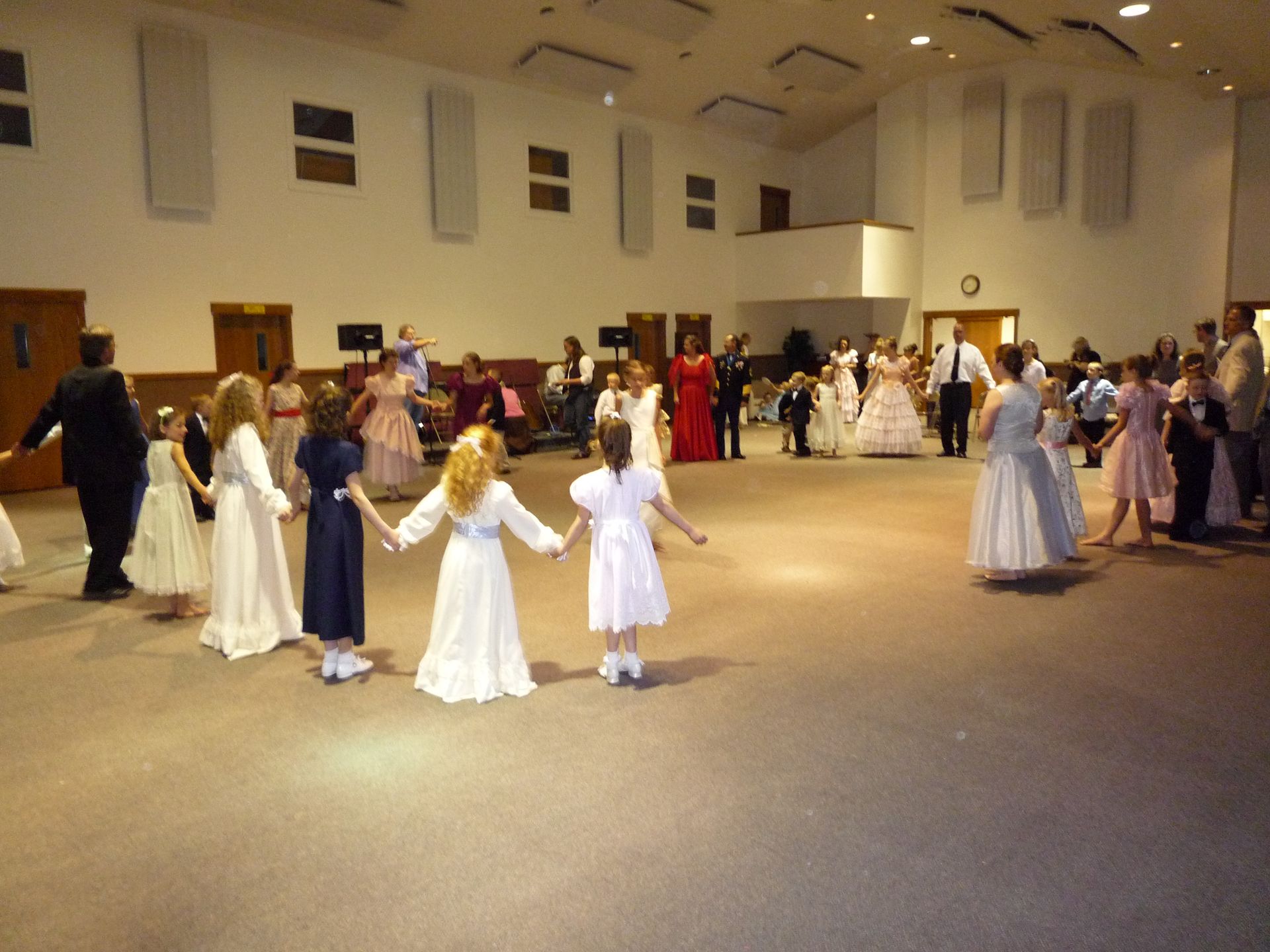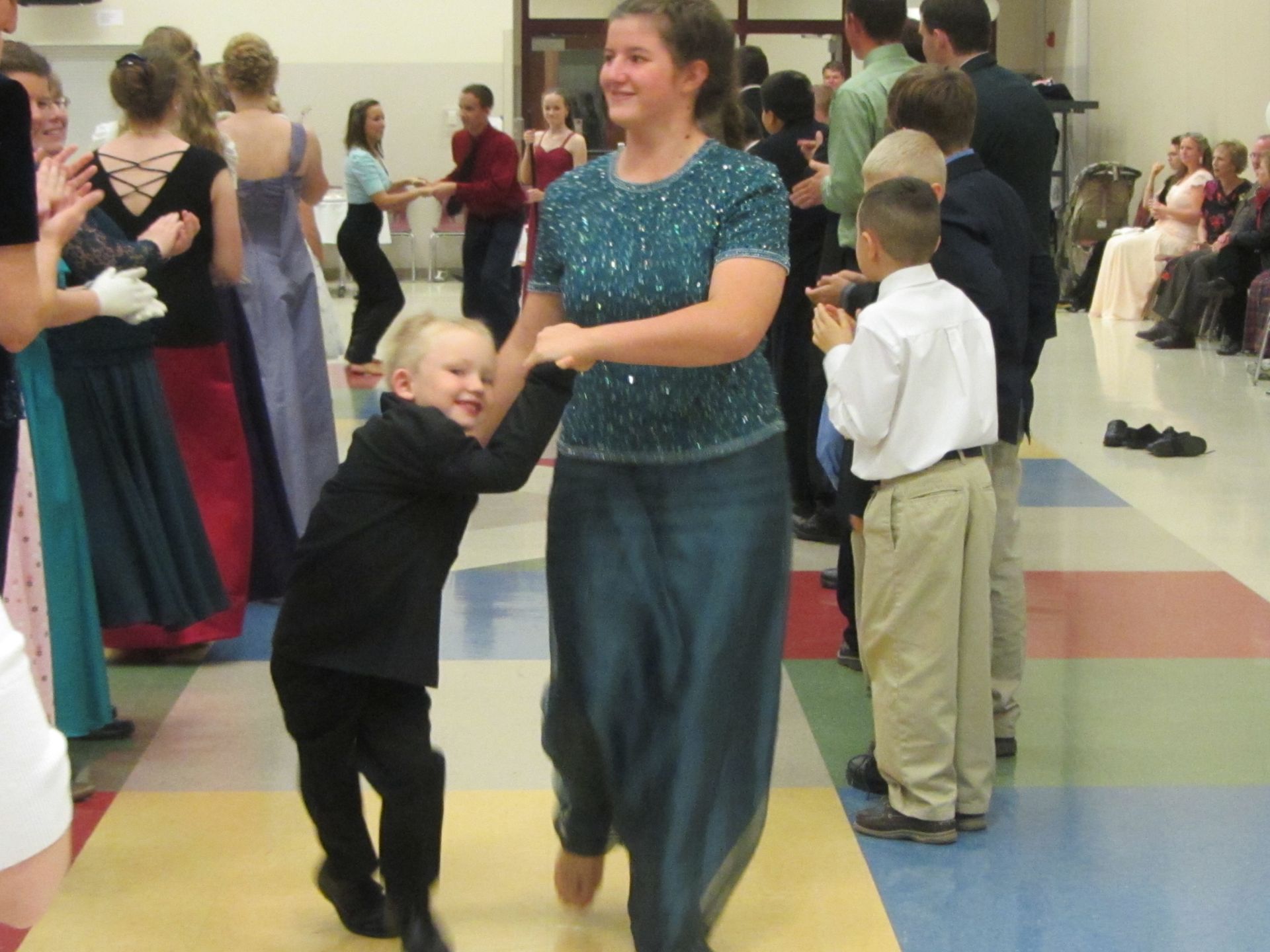Scottish Ball Parenting Tips
When we started this ball at our church a decade and a half ago, it was a vision larger than simply a dance. We wanted our young sons to grow up being comfortable in the presence of opulence, as close to high society as we could get, practicing their manners beyond table manners. We wanted them to learn to not be self-conscious. We wanted them to know that in Christian culture, participation is not only for their benefit, but for the benefit of others. We wanted them to dress in their suits and ask the father of a girl to dance before they asked her. It wasn’t a romantic culture that we were after. It was a culture of God‘s people of all generations joyfully dancing before the Lord in one accord. We have a vision where children enjoy being around the company of their parents and elders, and where age segregation isn’t necessary to keep children in the faith. Several families had the same vision, and we labored together to make it so. Every single child was on the dance floor. There was nobody hiding under chairs or refusing to dance. All these years later, memories of these times are among our sons' favorite markers of childhood.
So with that being said, here are some of the things we did to help prepare our children for the experience so they could thrive.
- Vision cast. Talk talk talk. For weeks before the event, the excitement would build as we described the beauty they were about to partake in. We described the excitement of getting all dressed up. We made the expectations clear that they were going to be dancing. We talked about the rules without calling them rules. We talked about how there would be no running around (as boys are want to do) and that there would be no getting into snacks until the designated time and about not rushing the table. They would take just a few items on their plate in order to Leave plenty for other others. We talked about what to do with their cups when they were finished. We talked about how much fun this was going to be and how they could stick with us if they wanted to. We discussed that the dancing would not be difficult, but they were still to listen very carefully, so it did not cause distraction to others who were trying to learn. We even practiced some of the dances at home. We prepared them that they might occasionally be dancing with people they didn’t know and that if they’d prefer to just stick with us, they could be our sidekick. We talked about how strong and dapper they would look and feel in their fancy clothes. We role-played asking the fathers to dance with her daughters with much fun. Sometimes daddy would answer roughly. Sometimes he would smile. Sometimes he would make a joke. Sometimes he would tease them. We tried to prepare them for anything. Sidenote – if they felt uncomfortable with this, we simply went with them and held their hand and coaxed them along.
- Baby Carriers! For the younger ones, we had baby carriers. (All the cool parents dance with the baby or a toddler on their back.) One year, our youngest, got a bee in his bonnet and he was "not having it" in the carrier. In a rare but loud display of protest, he hollered the entire Grand March. We just chuckled and moved forward. What can you do? Nobody’s perfect. If you have very small children who are feeling a little “whelmed”, we have found an excellent technique. Rather than dance with your child as a “partner”, keep that little one close to you as an extension of you and then the two of you dance with a partner. Just bring them along. In our own experience, we had a three-year old who was capable of holding his own spot, and a five-year old who still wanted to dance with Daddy, so every child is different. Also, it is ideal if every dance “set” has older and younger people dancing together. That keeps the littles on track and helps everyone learn. If you’re dancing with a 5 year old as a partner, just put them where they are supposed to go. They’ll catch on!








